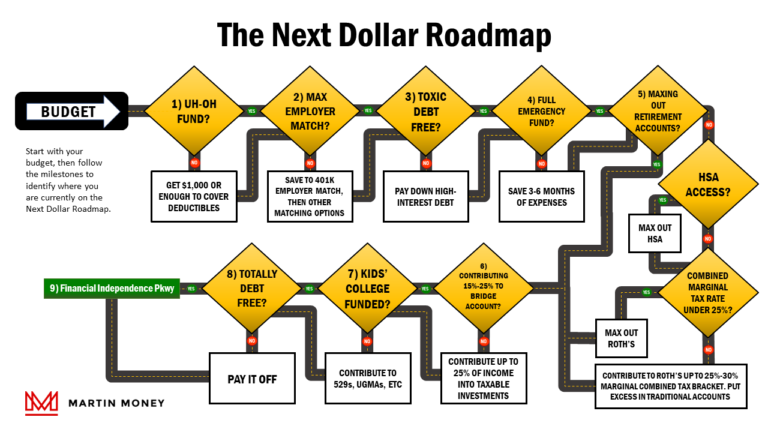How do I Achieve Financial Independence?
To achieve financial independence, you need to generate enough passive income to cover your living expenses. Calculating your living expenses and using guidelines like the 4% rule are helpful ways to set your saving targets for FI.
What is Financial Independence?
In the absolute most basic terms, financial independence means you have enough passive (non-working) income to meet your financial obligations.
It has become a wildly popular financial topic over the last decade along with the burgeoning FIRE movement.
And while I don’t necessarily understand the motives of some FIRE followers, I do think it is a positive trend overall. It sure beats being clueless about one’s financial future.
Passive income can come from a variety of different sources, and we’ll discuss some of those options in further depth below.
But it’s also more complicated than just figuring out where to source some extra cash flow. Your age, savings, spending rate, kids, market forces, tax situation, and many other factors impact your FI situation.
We’ll take a quick walk through some of these factors and then talk about how you get to financial independence yourself.
You Need to Know How Much You’ll Spend
The first thing to pinpoint is how much you plan to spend while you’re enjoying your life of financial independence.
This will naturally dictate your ability to achieve FI because the more you spend, the more income you’ll need.
I’m pretty sure I could retire now at 42 if I could find a way to live on $20k per year. Alas, I think my kids eat half that much by themselves so I think I’ll just hang on to my day job for a while.
To understand your spending needs, you’ll need to do a budget if you don’t have one already.
Once you arrive at a monthly spending average, I’d encourage you to go ahead and multiply it by 12 to have your annual spending amount.
We generally talk about income and taxes and investing in annual terms anyway. You might as well be thinking in the same units of measure.
Finally, be sure to account for things that may change financially after you step away from traditional work.
Think about mortgages, kids, changes in travel habits, insurance expenses, etc. Your life and budget will probably change and you need to account for that in your calculation.
How Much Income Will You Have?
Next, you need to know how much passive income you’ve got coming in.
If you’re already at or near retirement age, you may want to factor in Social Security or pension income here.
If you’re younger your passive income sources are more likely to be things like rental property, investments, or other side hustles or businesses you’ll be able to focus on more if you leave a traditional job.
If your total passive income already exceeds your expenses, congratulations! You’re already financially independent.
If you have a gap then at least now you know how much more passive income you need to generate to get to financial independence.
Multiply by 25 (The 4% Rule)
If your passive income plan is dependent on you building a large chunk of capital that will produce interest or dividend income, then you need to figure out how big of a nest egg to gather.
The generally accepted approach to this is to use the 4% rule.
The 4% rule basically says that if you withdraw 4% of your portfolio balance annually (increasing with inflation) it has a very good chance of lasting 30 years without running out of money.
Since 4% is also 1/25th, you can just multiply your income needs by 25 to more quickly calculate the total value of the portfolio you need to build.
However, if you are younger than 60, I’d consider making more conservative plans.
If you’re around 50 I’d suggest using the 3% rule (33.3x), If you’re 40 use the 2.5% rule (40x), and if you’re 30 go with the 2% (50x) rule.
These multipliers are admittedly quite conservative, but I’d prefer to err on having too much as opposed to the alternative.
How to Get There Traditionally
People traditionally build a nest egg of assets because it is low maintenance and relatively easy to manage once you build enough capital.
Think about it. You just purchase income/capital-producing assets like stocks, bonds, etc., and sit back to watch your earnings roll in.
It doesn’t get much more passive than that.
The only problem is this will generally require a hefty sum of money in order to generate enough earnings for a person to live off of.
For example, let’s assume you have a passive income target of $80,000 per year and you plan to invest the entirety of your nest egg in an S&P500 index fund.
Historically, the S&P500 has returned a little over 10% annually, so you’d need a nest egg of $800,000 to produce that level of income.
But that doesn’t mean $800k would be enough.
This example doesn’t account for inflation and it assumes you’re 100% invested at all times. We know that’s unlikely because you need some of the money to live on.
It also doesn’t account for the loss of principle.
What if the balance drops below $800k in a given year? Are you going to just stop taking out money? And will you replace the shortfall or just wait for the balance to recover?
This is why the 4% rule isn’t the 10% rule. You need margin for your balance to take the ups and downs of the market for equities and debt instruments like bonds.
Furthermore, if you pull income directly from invested assets, you may have to sell equities when the market is in a downturn, amplifying the loss.
Most people keep a couple of years’ worth of expenses in a fixed income or cash status to ensure the preservation of that capital.
As market prices increase, they can then sell off shares and move the proceeds into cash for future living costs. This way you can avoid buying high and selling low.
Some Ideas to Get There More Quickly
If you just really hate working and can’t wait to be free, there are other ways to generate passive income.
Ironically, some of the most famous people to pull off an early retirement earn thousands of dollars of passive income from blogging about their experiences.
Mr. Money Moustache is one of the most popular and a FIRE trailblazer. Financial Samurai and Mad Fientist are a couple of others.
Another very popular method is purchasing real estate and acting as a landlord.
If you use leverage effectively, this strategy can allow you to generate income without an enormous initial investment, but it is somewhat risky.
Real estate is also a good approach if you have some skills in home repair and maintenance. You can turn sweat equity into real monetary value by house flipping (hard to do in the current market) or by using the BRRRR method (buy, rehab, rent, refinance, repeat).
If you have any unique skills or trades that are marketable, you could also consider going into business for yourself.
Sure it’s risky, but at least you’ll be the commander of your own schedule.
The Martin Money Goal
When I was in college I majored in business.
Of course, somewhere in there, we covered basic financial concepts like the time value of money, yields, interest rates, earnings, dividends, etc.
It also occurred to me at some point that if I just built up a large enough pile of money, it could produce enough income on its own that I’d never have to work again.
Think back to the board game Monopoly. If you own enough income-producing assets, victory is inevitable because you’ll be earning money more quickly than you spend it.
You probably don’t think that’s anything revolutionary, but I was a naïve teenager, so bear with me.
The problem is obtaining such a huge pile of cash. I had a negative net worth at the time and no clue how the job hunt was going to go after school.
Some other things happened to help me along the way, but there’s one irrevocably important concept of personal finance that I learned then and I’ve never forgotten.
PAY…YOURSELF…FIRST…
There isn’t a more important maxim in personal finance and certainly not if you want to be financially independent.
You must prioritize saving when you get your first job and you’re tired of driving that piece of junk you’ve had since high school.
You must prioritize saving when you get married and your girl wants the bling bling ring that makes her finger feel heavy and your heart skip a beat any time she holds her hand over water.
You must prioritize saving when you get tired of the people in the apartment over yours that think 11 pm is a great time to vacuum their floors (I really lived under these people in college).
You must prioritize saving. Period.
Then, after some time has passed, your hard work builds into a growing snowball careening down a hill and gathering mass as it goes.
Eventually, it’s growing faster than you can spend it.
That is financial independence.
If you had asked me in my 20s how it was going, I would have told you I’m not really sure.
In my early 30s, things were progressing, but at a dreadfully slow pace.
In my late 30s, things got interesting when the snowball started producing about as much income as I could.
Then it passed me.
Then it passed our household income.
Now, financial independence isn’t really a matter of if for us, but when.
I may work for decades yet, but eventually, it will be because I want to; not because I have to.
To follow the same journey we’ve been on, please check out our Next Dollar Roadmap.
It’s exactly how we’ve approached our journey to financial independence and if you followed the plan and gave me a feather, well, I guess we’d both be tickled.







